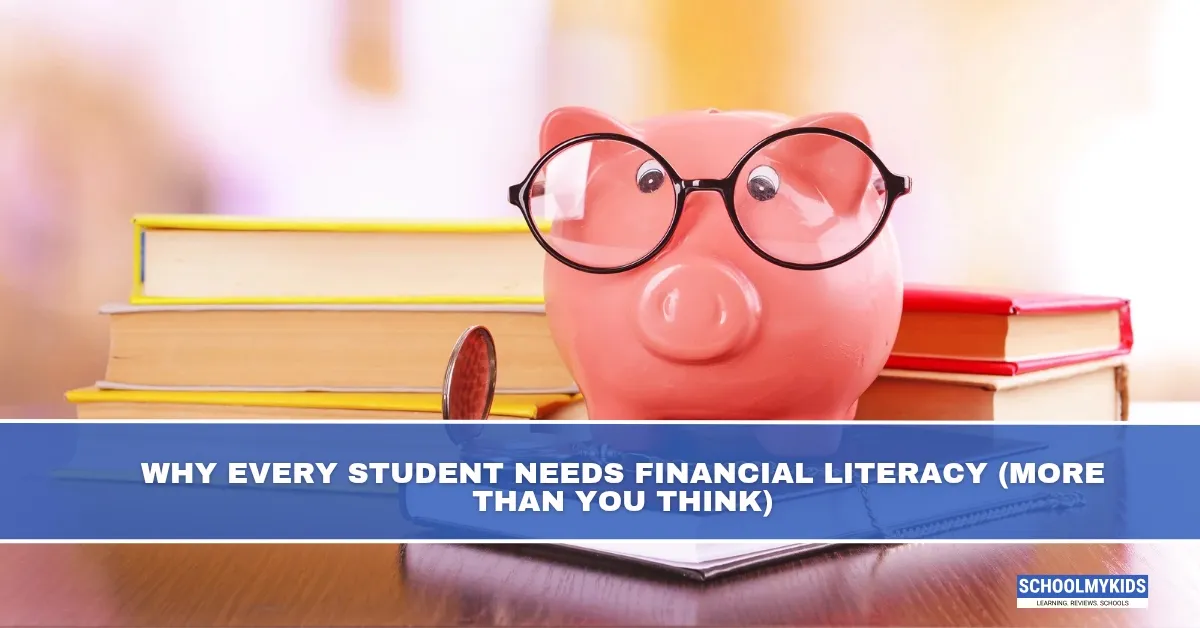Money is a part of everyday life, yet most students receive little to no formal education on how to manage it. Financial literacy—the knowledge and skills to make informed financial decisions—is no longer optional; it is essential. Whether it’s handling pocket money, budgeting for college expenses, or planning for future goals, financial literacy equips students to live independently and confidently in a complex economic world.
What is Financial Literacy?
Financial literacy means understanding the basics of money management, including:
- Budgeting: Planning income and expenses to avoid overspending.
- Saving: Putting aside money for future needs or emergencies.
- Investing: Growing wealth through instruments like SIPs, fixed deposits, or stocks.
- Borrowing: Knowing how loans, EMIs, and credit work.
- Digital Safety: Recognizing and avoiding scams in online transactions.
For students, financial literacy is not about mastering economics—it’s about learning how to make practical, everyday money choices.
Why Students Need Financial Literacy
- Building Independence: College and university often mark the first time students manage money without constant parental supervision. Financial literacy helps them handle allowances, scholarships, or part-time job earnings responsibly.
- Preventing Debt Traps: With the rise of easy loans, EMIs, and credit cards, students can fall into debt early. Understanding borrowing ensures they only take on what they can repay.
- Smarter Spending Habits: Financially aware students learn to differentiate between “needs” and “wants,” avoiding impulsive purchases.
- Preparing for Emergencies: Life is unpredictable—financial literacy ensures students know the importance of emergency savings and insurance.
- Future Planning: Even small investments during student life can grow significantly over time, thanks to compounding. Starting early builds financial security.
- Digital Age Challenges: From UPI frauds to phishing scams, digital payments have risks. Financially literate students are better at protecting themselves online.
Key Skills Students Should Learn
- Budgeting Basics: Track income, set limits for food, travel, and leisure.
- Banking Knowledge: Using savings accounts, net banking, UPI apps safely.
- Understanding Credit: How interest rates and EMIs work.
- Saving & Investing: Benefits of recurring deposits, SIPs, or even small savings plans.
- Recognizing Scams: Spotting fake links, lottery messages, or too-good-to-be-true offers.
- Goal Setting: Linking money management to personal goals like gadgets, trips, or higher education.
How Financial Literacy Benefits Students in the Long Run
- Confidence in Decision-Making: Students can take financial decisions without relying on others.
- Better Career Choices: Financially aware students are more likely to weigh job offers based on salary, benefits, and growth opportunities.
- Entrepreneurship Readiness: For those dreaming of startups, financial literacy is the foundation of business success.
- Stress Reduction: Managing money wisely reduces anxiety around bills, fees, or unexpected costs.
Ways to Build Financial Literacy Among Students
- Workshops & Seminars: Schools and colleges can organize sessions on budgeting, loans, and investments.
- Practical Exercises: Encourage students to manage mock budgets or track monthly expenses.
- Parental Guidance: Parents can involve children in family budgeting discussions.
- Online Tools: Apps and calculators help students learn by doing.
- Peer Learning: Student groups can share tips, experiences, and financial hacks.
Conclusion
Financial literacy is not just about money—it is about life skills. A student who knows how to budget, save, invest, and spend wisely is better prepared for adulthood. In a world of rising costs, digital risks, and financial complexities, every student needs financial literacy to build independence, avoid mistakes, and secure their future.
Starting early with financial education ensures that money becomes a tool for empowerment, not a source of stress.








Be the first one to comment on this story.